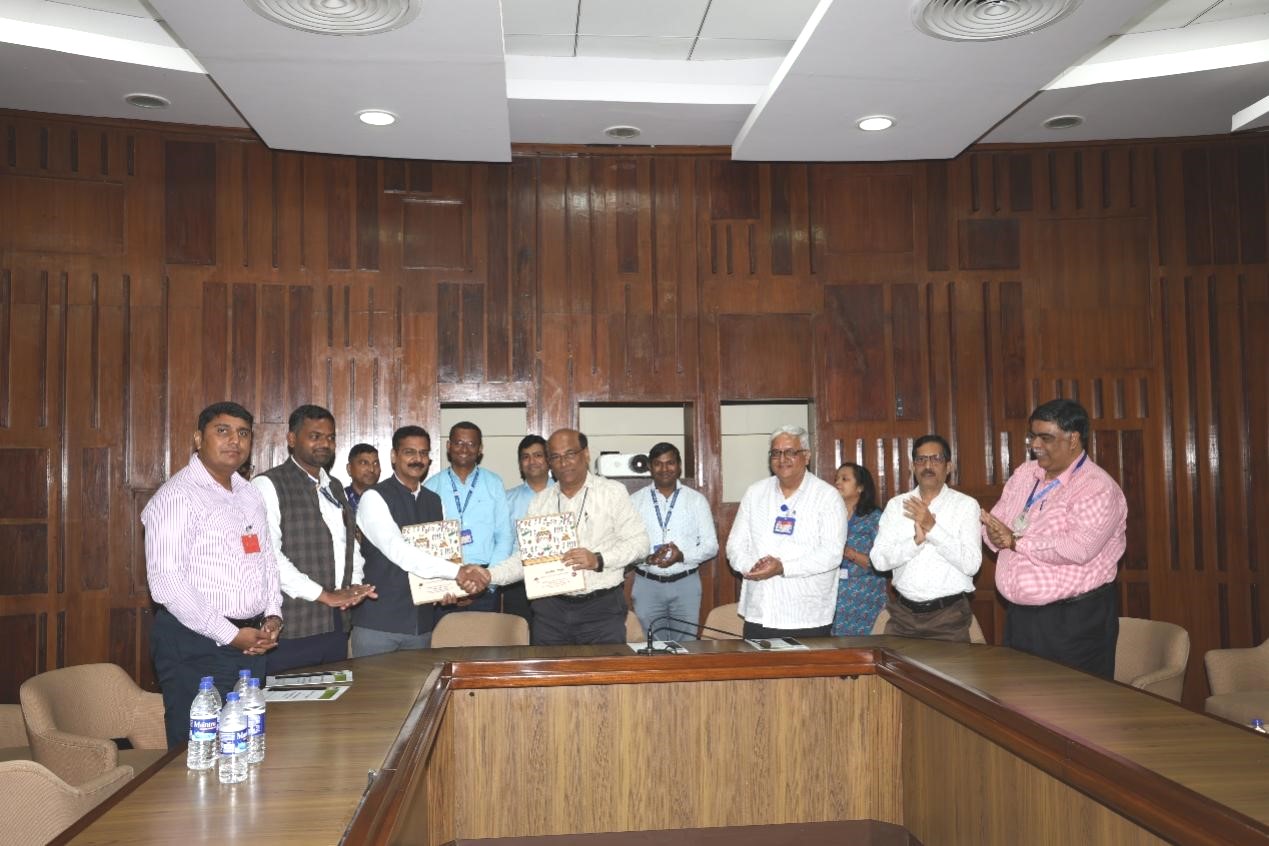Department of Atomic Energy
Non-Destructive Techniques for Analyzing Ancient Artifacts
MoU Signed Between Bhabha Atomic Research Centre and Directorate of Archaeology and Museums, Maharashtra
प्रविष्टि तिथि:
30 SEP 2024 7:37PM by PIB Mumbai
Mumbai, 30 September 2024
In a significant step towards enhancing the conservation of cultural heritage, the Bhabha Atomic Research Centre (BARC) and the Directorate of Archaeology and Museums (DOAM), Government of Maharashtra, have entered into a Memorandum of Understanding (MoU) to utilize neutron-based non-destructive techniques for the analysis of ancient artifacts.
The signing ceremony took place at BARC, with Dr. S. M. Yusuf, Director of the Physics Group at BARC, and Shri Sujitkumar Ugale, Director of DOAM, overseeing the agreement.

Director of BARC, Mr. Vivek Bhasin, expressed his enthusiasm for this initiative, stating that the MoU will promote the use of advanced imaging techniques in archaeological research. Chairman of the Atomic Energy Commission, Dr. A. K. Mohanty, emphasized the societal benefits of utilizing DAE research reactors for enhancing our understanding of India’s rich cultural heritage.
The collaboration aims to harness the unique capabilities of neutron imaging to gain insights into the structural composition and historical context of cultural artifacts. Neutron-based methods are particularly valuable due to their non-destructive nature and ability to penetrate various materials, providing vital information about the craftsmanship and production techniques of ancient objects.
This partnership marks a pivotal advancement in the intersection of science and archaeology, ensuring the preservation of artifacts for future generations while enriching our understanding of India's historical craftsmanship.
The event was attended by key officials from both organizations, including Shri Hemant Dalavi and Dr. Mayur Thakare from DOAM, as well as Dr. L. M. Pant and Dr. S. Adhikari from BARC.
Why Neutron-based techniques?
Archaeological sites and cultural heritage artifacts are vital for defining a nation’s identity and promoting cultural tourism, which contributes significantly to national wealth. Effective conservation is essential, requiring a thorough understanding of an artifact's structure and composition. Among various techniques, neutron-based imaging is particularly valuable due to its non-destructive nature and deep penetration capabilities. This method allows conservation scientists to explore the internal structures of ancient artifacts, providing critical insights into historical craftsmanship and manufacturing practices, thereby ensuring the preservation of cultural heritage for future generations.
* * *
PIB Mumbai | DL/ DR
Follow us on social media:
@PIBMumbai  /PIBMumbai
/PIBMumbai  /pibmumbai
/pibmumbai  pibmumbai[at]gmail[dot]com
pibmumbai[at]gmail[dot]com  /PIBMumbai
/PIBMumbai  /pibmumbai
/pibmumbai
(रिलीज़ आईडी: 2060404)
आगंतुक पटल : 300
इस विज्ञप्ति को इन भाषाओं में पढ़ें:
Marathi